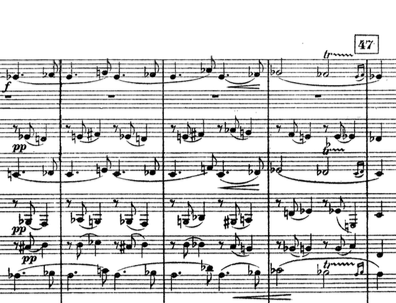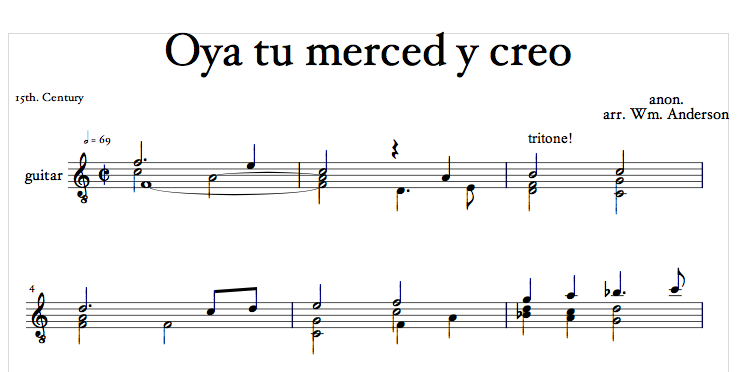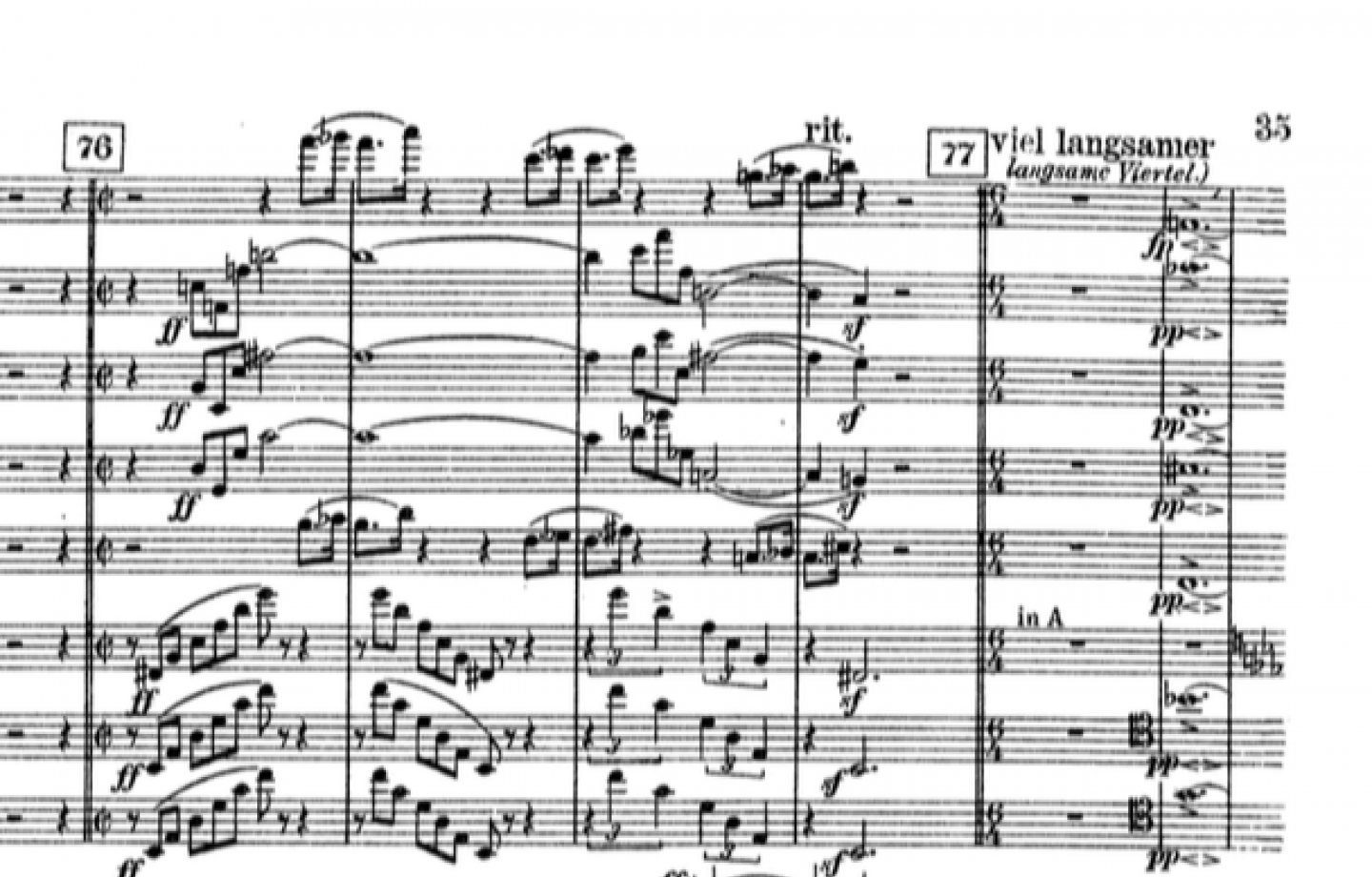Screaming for Sibelius
"A language and a style are blind forces; a mode of writing is an act of solidarity.”--Roland Barthes in his essay “Writing Degree Zero”.
At the moment, there is little solidarity in the act of composing music. Boulez called for it when he said (paraphrasing) everyone has to look into what Schoenberg did. What Boulez meant is terribly clear to anyone who feels Schoenberg created a vast new musical environment for composers to flourish, or try to flourish. That so many have tried, but failed is the simple, easy explanation for the present moment where some people who care about music very much are *screaming for Sibelius*.
This new Op. 9 orientation seemed to scream for a thorough and final reorientation away from scales and scale degrees. (I always resisted this schism.) Op. 9, however, does not give up anything. There are key signatures, there are scales. There are scale-degree things that are related to the other brave new things he explored later. Op. 9 shows how to overcome the scale-degree/set class schism for folks on the other side of the 20th C. abyss. We don't have to fear scale degrees.
These thoughts on Op. 9 come on the heels of a jaw-dropping live performance of the Webern arrangement--->
The same group, Cantata Profana, will take on Schoenberg's Serenade, Op. 24 in late September. As I practice the mandolin part for that performance, I am am thinking that there will be an Op. 24 post soon.
In the later works, Schoenberg found an approach that allowed for greater contextual specificity. Op. 24 is key in that trajectory. In Op. 9 there is a tune for each interval cycle (as Milton Babbitt pointed out at his 90th birthday concert at Merkin), but Schoenberg’s later works show us how Op. 9, which we love to death, was nevertheless only a starting point. Interval cycle tunes could be wonderful only once for Schoenberg. They were based on something too generic. Clearly, he did not consider it to be an option to continue in that vein. However, he learned from Op. 9 about how to handle these colors; he developed a sensitivity to the grain of the various woods he would use for the rest of his life.
Schoenberg spoke to some of us, and for that group that happily capitulated, Schoenberg changed our way of hearing in ways which cannot be unheard, & unthought; we were called to rethink music from the ground up. We hear the variegated colors of the interval cycles behaving so differently from the the behavior of scales; The interval cycles include colors that strongly unseat one another. Colors in oil and colors in water--they don't mix, but instead one shimmers, floating improbably on the other. The colors of the scales and modes work much differently.
And this way of hearing influences our hearing of ealier music. Such behaviors (call it interval vector sensitivity) can be found in tonal music. We didn't think about tonal music in this way, but we can, and we can learn from that. [ see examples, below ]
And the revolution stalled. Those fascinated by these new sounds failed, momentarily, summoning forth the non-capitulatiors. Non-capitulations on various fronts are overwhelming—the Beatles & the minimalists. The Beatles bring back Baroque harmony with a Blues difference (never mind the superficial nods to Stockhausen); the minimalists--Reich owes a wee bit to Perotin.
---My favorite minimalist work is Schoenberg's Op. 27 #4.---
Glass is Baroque music that stutters.
I--bVI is Baroque enough, but the manner of repetition in Glass destroys the Baroque association. Both Reich & Glass are influenced by world music. Reich used African tunes, as in Electric Counterpoint; Glass was influenced by Indian music & Ravi Shankar. These are brave non-capitulations that brought many ears with them, ears that never heard of Op. 9 and cannot be accused of dismissing it, because they have never heard of it.
Other non-capitulations:
--Nonsuch Records’ transition from Wuorinen’s Time’s Encomium to the world music of their Explorer series.
--Kronos Quartet’s world music & minimalist forays
--Alex Ross’ elevation of Sibelius, Adams, Reich
--Taruskin’s social constructivist retake of musical values, a capitulation to social forces, most of which have ignored Op. 9. Audiences don’t get Op. 9, so we can all ignore it!
A few of post-tonal practitioners have taken this to heart, capitulating to these non-capitulations by telling themselves that all the post-tonal folks must do better, and it will take time. In Central Europe there is relatively little capitulation, especially in the new music establishment. They say, the state supports us and those who don't get it are on the wrong side of history. Sibelius is considered decadent and backward looking. In the US there are many who stand with the Central Europeans. Jacques Monod railed about the decadence of Richard Strauss. (He's gotted over that. I have a recent score that's quasi tonal.)
For those who capitulated to the non-capitulations, these rallying cries against the decadence of tonal hold-outs are sounding quaint. Europe is proudly dug-in, but here in the US, composers, musicians and listeners are divided on the subject, and even those who soldier on in their post-tonal calling are feeling a 21st C. difference--a capitulation toward these non-capitulators. And the air is less stuffy.
Examples:
Op. 9 can be discussed in terms of Peter Schat's tone clock, where the 12 trichords are said to be "driven" by the transpositions through which each trichord generates aggregates. In the example from Op. 9, above, a trichord from the E hexachord is "driven" by the 4 cycle. F-Gb-F-A; C-Db-C-E; G-Ab-G-B--- 015, transposed by 4ths completes an aggregate. Note--he did not add the 4th transposition. It's implied. It's "...". And a lovely double entendre is in that this 015 figure is given a clear tonal, scale degree incarnation as well---scale degrees:

Op.9 is the first 21st C. piece.
Robert Pollock's music is often squarely in Op. 9 territory, via Schat, who Pollock sought out and befreinded. In Pollock's guitar music the essence is often 4ths driven by major thirds.
Harold Melzer's music is less concerned with complementation, but nevertheless there is a truly impressive set class clarity from one idea to the next, creating arcs that can be compared to Op. 9.
Matthew Greenbaum calls his music tonal. His Wolpe-inspired gamuts of 9-note sets are his means of bridging the apparent gap between diatonic music and music that is immersed in the chromatic hexachord (say, Eleanor Cory, sometimes Mario Davidovsky, Morris Rosensweig).
Frank Brickle's msuic from the last 20 years is broadly Op. 9-ish, and with some remarkable insights into Op. 9 issues that can be found in his Princeton doctoral dissertation.
What is innovation in music?
We didn’t know we wanted to hear 16ths phase into 32nds. Reich created a musical desire. His work answered a desire by creating that desire. That was one of his great innovations. Op. 9 also did this. For Boulez (and many others), it created an imperative, a reorientation that felt impossible to ignore. The two innovations are obviously of drastically different natures, with different ranges, different spheres of operation; they both reach into our nervous systems in much different ways.
Beatles & the Rolling Stones take the blues and remake it for baby boomers who don’t know it’s blues.
Next, our post-tonal music is too often stuck in a smaller, stunted post-tonal world; stuck in stultifying octotonic prisons, perpetually grey. Op. 9 makes huge displacements from one universe to another. The heirs to Op. 9 too often stay complacently in one sound world, making shapes that don't move, don't sparkle; or, if not that, we roam about promiscuously, all the while feeling that we are safely breathing the air of other planets. There has been too much of this proud, complacent post-tonal music. How can we be surpised that people are screaming for Sibelius?
Summary
Music can be innovative in many diverse ways. New musical desires will be created and met. Audiences don’t care so much about the historical sweep of an innovation because audiences don't necessarily have an historical perspective. The Op. 9 difference, as compared with various other differences mentioned here, is clearly of a different order, but the world will take its sweet time coming around to that.
For those who are working this terrain, capitulating to the non-capitulators makes your job easier. Use all the elbow room afforded by your capitulation to the non-capitulators. Do it your way; don't try to sound like Schoenberg; don't try to be an Expressionist. Be a post-Beatle, post-Stockhausen Op. 9 cognoscentus. Op. 9 is a straddling work and the world's stalling embrace of Schoenbergian innovations is an invitation for composers to straddle for the immidiate mid-term, to linger in that potent zone on the cusp.
Below are some unedited ramblings, as well as some examples of IV stuff in tonal music.
////////////
Boulez the Webernian & Babbitt the Schoenbergian
(Getting back to the Barthes quote)
Boulez & Dina Koston both felt that Schoenberg was tonal music with wrong notes. Schoenberg fans just say Schoenberg's music is tonal, and always post-Wagnerian Romanticism, and we're ok with that. Babbitt said that Schoenberg was out of fashion before the ink was dry. Yet Babbitt called himself a Schoenbergian.
The Till Eulenspiegel/Max und Moritz tone of Op. 9, its parodistic qualtiy, these are all aspects of Schoenberg's apocalyptic late Romanticism. Like Robert Musil's Der Mann ohne Eigenschaften or Hermann Broch's Die Schlafwandler, the extremity of Schoenberg's music is an artifact from the Austro-Hungarian empire teetering on the brink.
Boulez upheld Webern as the composer of the future, and aspects of Webern's music become the foundation of Darmstatd's musical values. In some of Webern's work there can be seen a striking equal weighting of each note in row. This mistakenly becomes thought of as a universally accepted goal of 12-tone music. The errror went so deep that many people who hate 12-tone music will cite the equal weight of each note and talk about how stupid that is as a musical value. No, equal weight is valued only by one faction.
Schoenberg never cared about equal weigting of the 12 pitches, nor did Babbitt, who always called himself a Schoenbergian.
Because we in the US are so multifarious compared to Europe, where state supported Darmstadt is so entrenched, there is a huge body of work excellent music that is being created, performed, recorded, and successfully escaping much currency or public recognition. It is music that benefits from being of this strange climate here in the US. It benefits from being under the radar. I am talking about very mature composers whose creative lives go way back to the Cold War days, but who got better as they entered the 50s, 60s 70s.
Op. 9 hearing of an Italian Rennaisance lute solo--->

C major is imbued with the scent of the 7-6 suspension; A minor (Picardi third or no) is imbued with the scent of the 4-3 suspension. Post Op. 9, this piece become very clear in its movement between two distinct collections that are not major or minor triads; the interval vectors of those two trichords [ C D F ] and [ E A B ] are like oil & water. The purging of the minor thirds in the 4-3 suspension is a universe away from the sweetness of the 7- 6 suspension.
Moreover, the strict avoidance of all but major and minor triads in all but these cadential measures puts a huge weight on those cadential measures.
There is a scale degree discussion to be had as well. This piece is in the universe of Op. 9.
Even closer to Op. 9 are the pretonal works with double leading tone cadences. The close proximity of not one but two tritones (that escalation of the tritone count) has enourmous rhythic weight. Moreover, the tritone in the diminshed vii triad has enormous weight, which convinces me easily that the diatonic hexachord (no tritone) is in play not so subtly with the Lydian hexachord.

The tritone in the vii chord gives that moment a great deal of rhythmic weight. Also, in this pre-tonal music the
elimination of all 3rds happens often when the tonic chord appears with no third.

This pre-tonal is post-tonal is so many ways. The double leading tone cadence as something that trumps the rhythmic weight of the vii chord is an inveral vector discussion. It is as if 500 years of scale degree music distracted us from other conversations that might have been had. That said, I am very curious about all discussions of double leading tone cadences.

